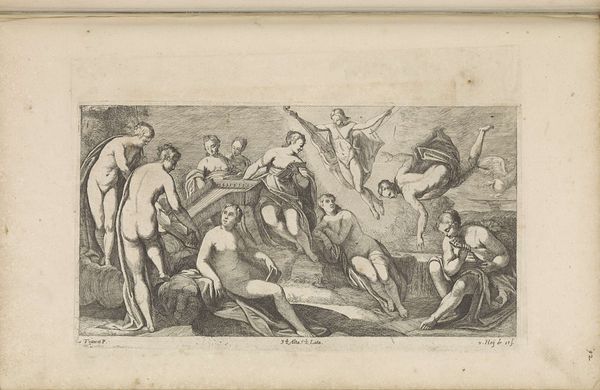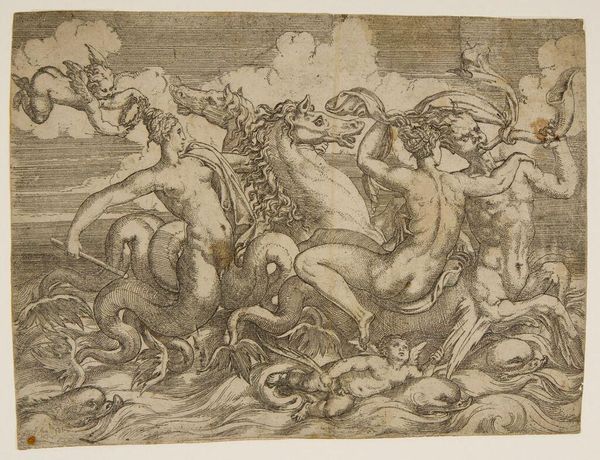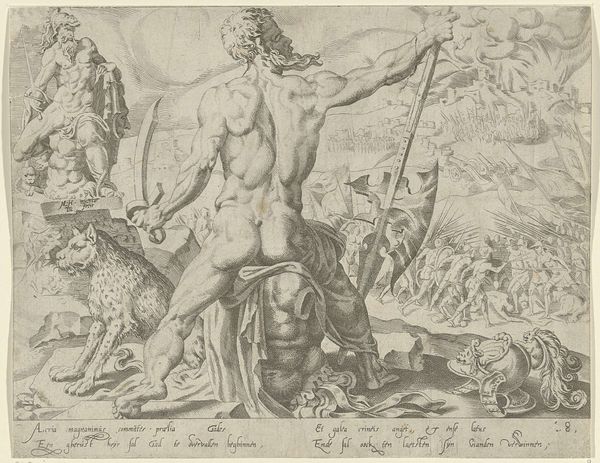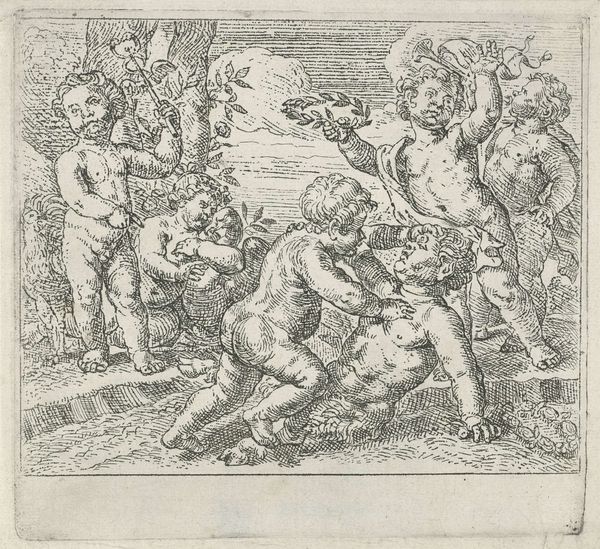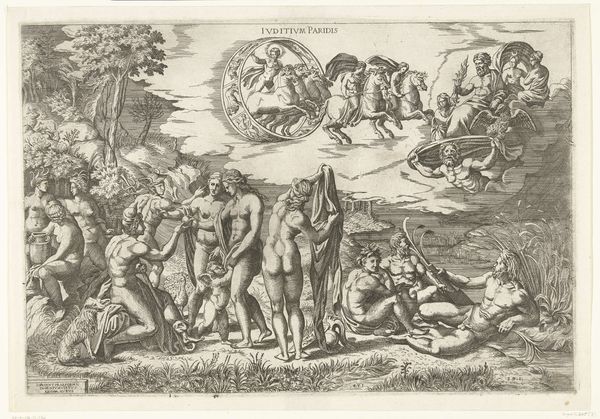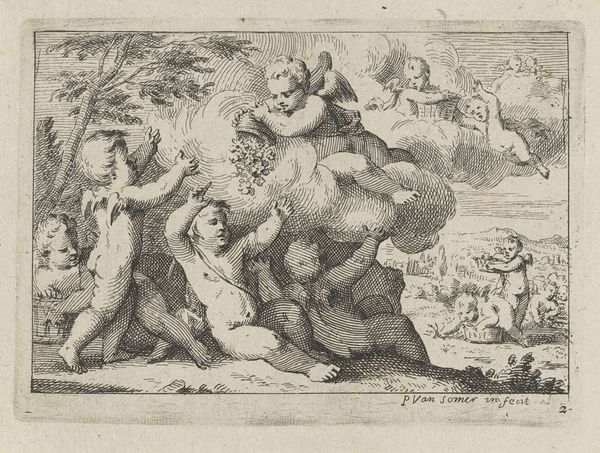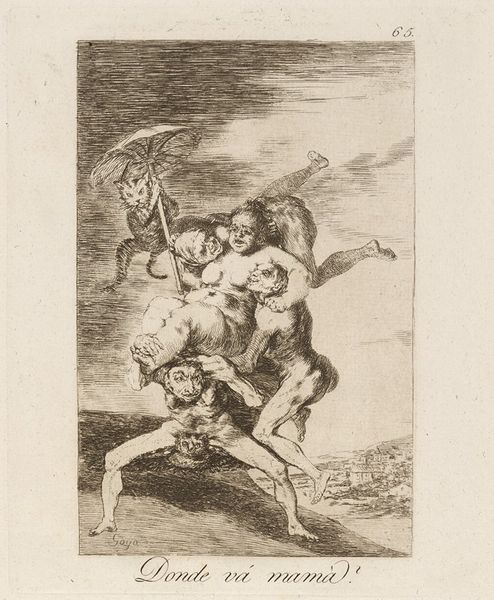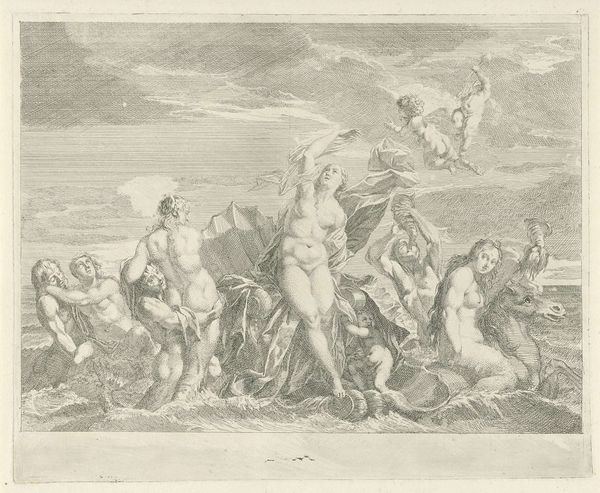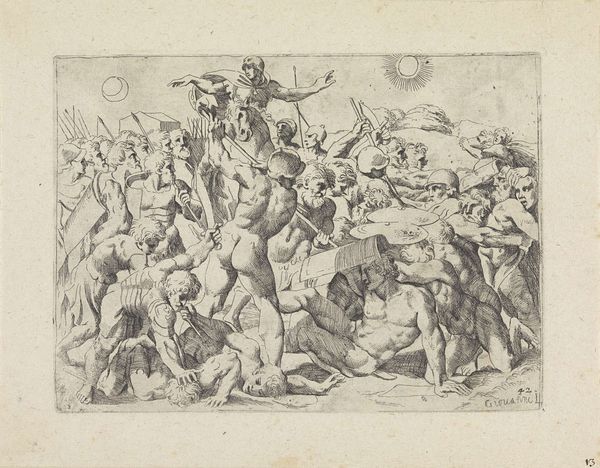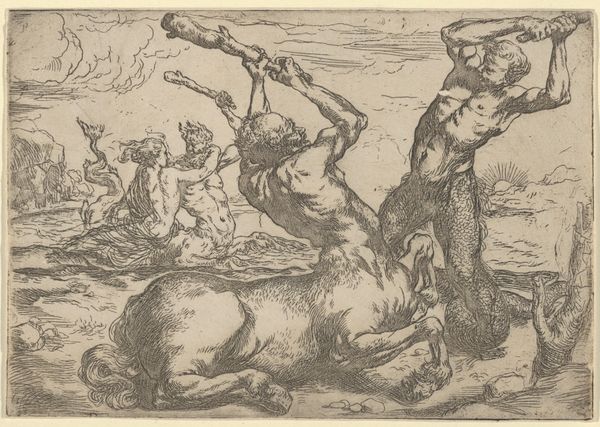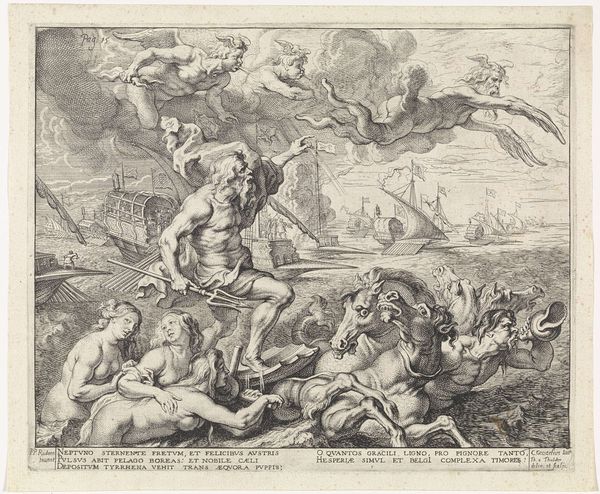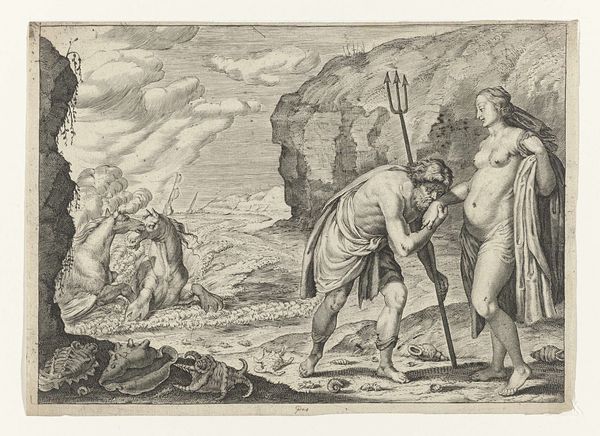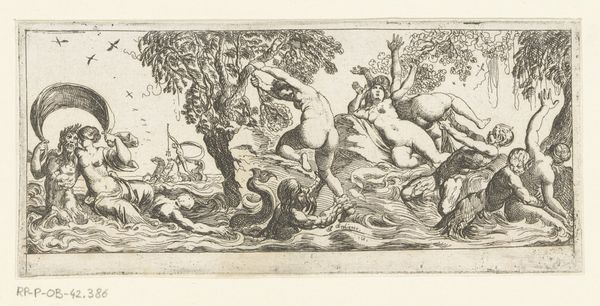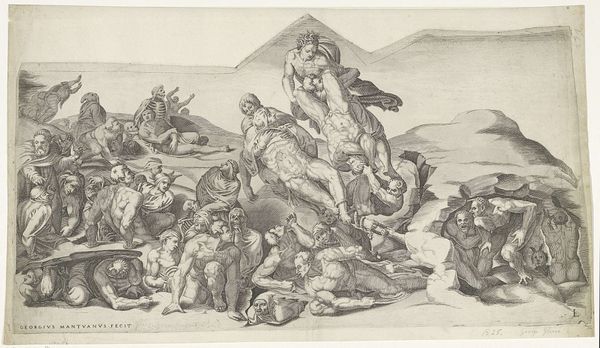
print, engraving
#
allegory
#
baroque
# print
#
figuration
#
form
#
line
#
history-painting
#
nude
#
engraving
Dimensions: height 137 mm, width 207 mm
Copyright: Rijks Museum: Open Domain
Curator: Looking at this dynamic composition, what is your initial reading? Editor: The overwhelming sense is one of chaotic abundance. A torrent of figures surging forward. The sheer density of lines, particularly in the lower half, creates a roiling, almost disorienting effect. Curator: Indeed! What you are perceiving is Cornelis Schut's engraving, "Triumph of Galatea," which dates to between 1618 and 1655 and resides here at the Rijksmuseum. Schut, deeply inspired by classical sources, presents an allegory richly embedded in symbolic meaning. Note how Galatea is flanked by lesser sea deities, each conveying nuanced aspects of aquatic dominion. Editor: The figures definitely evoke a sense of antiquity, with all the attendant allegorical weight one expects. Tell me, who is Galatea within this swirling vortex? Curator: Galatea, a Nereid—a sea nymph—is depicted at the center. She rides in triumph after rejecting the cyclops Polyphemus’ advances, symbolizing the victory of beauty and love over brute force. This narrative connects to broader themes of order overcoming chaos, civilized love resisting monstrous desire. Even the putti overhead contribute to the image, reinforcing her power and grace, but I am curious how this use of figures is reflected? Editor: Formally, that central grouping commands our attention by creating a vertical emphasis amidst the horizontal flow. Look how Schut balances the swirling mass of tritons and sea creatures below with the figures floating above, using a carefully structured pictorial logic to temper the otherwise overwhelming profusion of detail. The shading on the various characters' body gives the print a more dramatic effect too. Curator: Exactly. Each creature, each gesture, contributes to an iconography understood by a cultured 17th-century audience. But, moving beyond simple recognition, doesn't the surging tide of figures also tap into deeper archetypes of human aspiration and the perpetual tension between desire and fulfillment? Editor: I agree. The linear quality, a defining feature of engravings, adds a fascinating textural element that, when coupled with Baroque compositional exuberance, is arresting. Its impact lingers. Curator: This deep dive reveals a lot, so thank you. Editor: And to you. I feel more well informed.
Comments
No comments
Be the first to comment and join the conversation on the ultimate creative platform.
